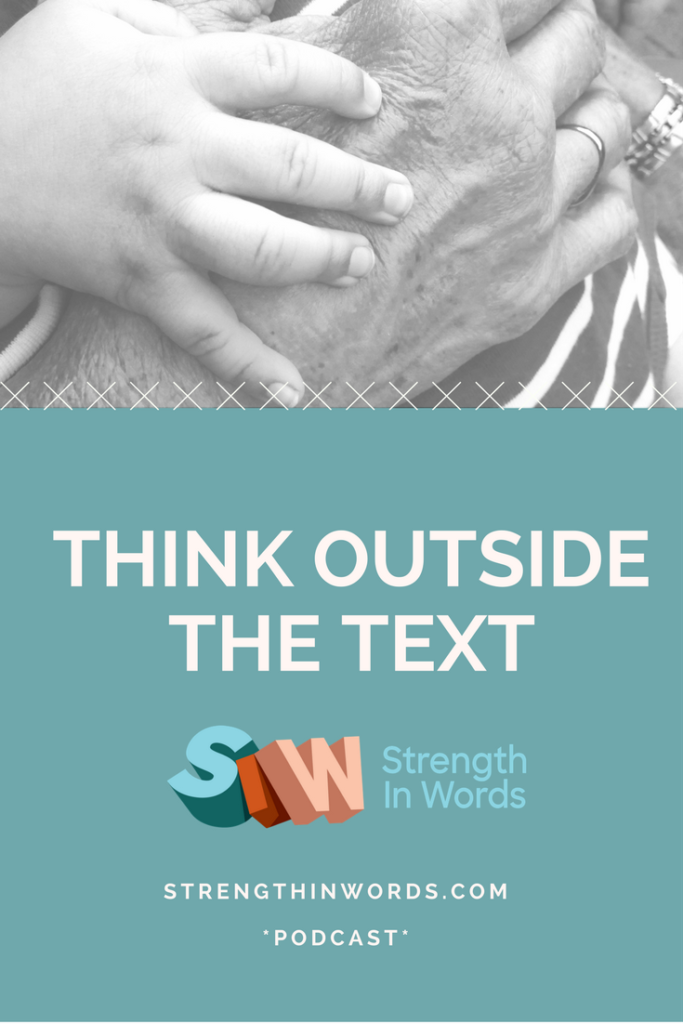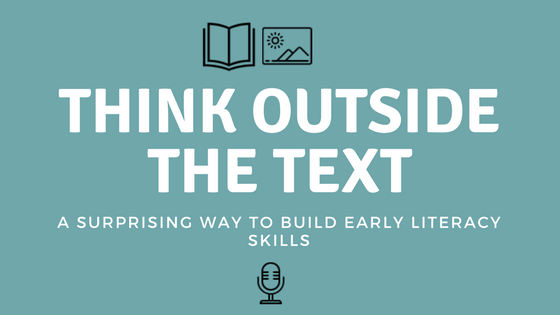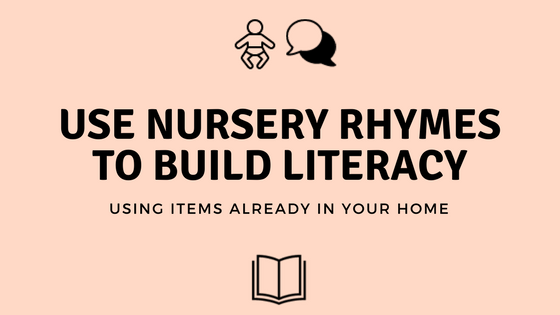When a book is not just for reading (it’s used to build early literacy)!

We’re used to thinking of the term “literacy” as a word to describe people who can read. What about the term “early literacy?” Does it simply refer to teaching young children how to read?
In this episode of Learn With Less, Ayelet discusses a few more ways to use books with infants and toddlers than simply reading the text on the page – and the benefits of exposure to early literacy experiences (hint: the term refers to much, much more than simply learning how to read)!
Below is a transcript of this episode’s “Developmental Thought,” an excerpt from the full episode.
For additional information, music, play ideas and the complete interactive family experience, please listen to the entire episode.
>>Don’t Miss Our Corresponding Blog Post!<<
I have heard parents say, “oh, I think that book is a bit too advanced for my infant…” It is never too early to expose your child to early literacy skills! Here’s the biggest misnomer:
The term “early literacy” is NOT the same thing as “learning how to read.”
There are many different early skills and supportive activities you can do that are involved in building literacy, including (but not limited to):
Simply exposing your baby to text and symbols (think about some of the activities we discussed in another podcast episode, “Visual Supports: An Intro”).
Handling books (whether that means your baby is quietly holding a book in her hands, wildly removing each one from the shelf, chewing on the board book, or turning a page).
Looking at pictures (and watching you point to those pictures as you speak about the words they represent, or starting to engage themselves in recognizing pictures).
More quote-unquote “early literacy behaviors” can be found on the Zero to Three website (link here) or in the book So Much More Than The ABCs, by Judith Shickendanz, published by the National Association for the Education of Young Children (an Amazon affiliate link can be found below).
Use Pictures to Stimulate Language
In a recent episode, “Visual Supports, An Introduction,” I gave some examples about how to use visuals in a more naturalistic, communicative way than simply labeling. It is very easy to us as adults to become “drill sergeants” when our intention is to help our young children learn.
Getting creative and asking different questions, creating playful experiences rather than pointing and naming, linking objects and people to previous experiences, are all great ways to provide a “language-rich” interaction. Let’s talk today a little more about how to integrate early literacy experiences into this idea of “language-rich” interactions.
Book reading is wonderful example of an activity that promotes joint attention, which I spoke about in Episode 1:“Why Sing?” When you sit and read to your baby, you’re not only exposing her to text and pictures, you’re also highlighting the idea that these things are important!
What Should I Read to Baby?
As adults, I think it can be difficult for us to instinctively know what on earth to say to these tiny people all day long, especially in those early days when there’s not a whole lot of reciprocation. By creating shared experiences, especially interactive ones, you are teaching your little one so much.
For those of you who are listening with newborns or young infants – or even those of you who are still pregnant – you can even hold your newspaper up and read it aloud!
In those early days and months, it isn’t about them needing to understand the content – it’s about them hearing your voice, being close to you, and watching (and being part of) what you’re doing and how you interact with the world. It’s also about you getting used to talking to your tiny baby.
How Should My Baby Engage With Books?
Within the first year of life, the way babies interact with books changes quite dramatically. Your baby may go from engaging more with the physical properties of a book (mouthing, shaking, crumpling, or waving it) to focusing on pictures (looking at, or even pointing to them).
By the end of the first year, babies often show more “enjoyment” of books, spending less time manipulating them and more time engaging with the pictures and listening to words.
Your older baby may hand a book to you or point to the one she wants when given a choice, and may help you turn the page.
But even very young babies can be encouraged to “turn the page” (even if this simply means that you’re reacting to her impulse to touch the book by offering and moving the page toward her outstretched hand). Young babies can be given opportunities to engage with the pictures in the story, as well, when engaged.
Your efforts as “the reader” will really pay off if you engage that silly side of you we spoke about last week. For instance, using lots of animated voices for your characters will not only heighten the likelihood that you can keep her attention, it also allows her to hear you play with your voice – and she’ll do the same in the form of cooing, shrieking, blowing raspberries, and babbling!
We know that, as opposed to forcing a child to sit through an entire book whether or not she is enjoying it, allowing and supporting young children to engage with books at their own developmental level is a more compelling approach to encourage early literacy.
So if your baby wants to simply turn the pages of the book, remove the books from the shelf one at a time (or all at once), then don’t be afraid to allow this to be the activity!
Talk about what she’s doing, or try to talk about one thing on the page or cover of the book she’s looking at (before she moves on), or read another book aloud as she busies herself with other books. Try different approaches to see what works – and remember that something might work one day, and not so well the next (or the other way around!)
Forget About The Words On The Page
Another thing to remember about book reading activities is that they are activities, like any other, and the object in front of you just happens to be a book. We tend to get boxed in by our adult understanding of book reading, but remember: reading the words on the page is not actually the only way to read a book!
It may actually help to find a book with no words, to create a book with pictures from magazines (like we did earlier), or to find a picture book in another language. Instead of reading the story as it appears on the page, simply point out what you see or make the sounds of the items that appear on the page.
I want to encourage you to “think outside the text.” Wordless picture books can very often provide more natural opportunities for adults to sit back and remember that shared reading is about noticing new things, making observations, creating solutions, predicting what’s coming next, attending to details, and listening to each other.
Even if your “co-reader” is not yet able to read or speak! (Check out our guest interview with Chickadee Lit, and our downloadable DIY Wordless Picture Book!)
A Few Ideas
I recommend going through the “wh-questions” in your head to help guide you in getting creative with what to say, so, “who” is in the picture or “who” has one of these / “what” do we see or what do you think will happen / “when” have we been there before or when do we regularly do this activity / “where” have we been where this happens / “why” do we do this activity?
Many of these will end up being questions you answer yourself (depending on the age and stage of your young child), but getting into the habit of asking questions or making predictions from a very early age is a wonderful thing to do with your child.
I find it also helps us as adults get out of the cycle of asking our children to simply label “what’s this?” “what’s that?” – as I mentioned in my episode “Visual Supports: An Intro“ as well.

